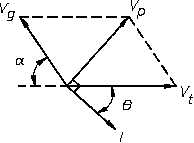AC MOTOR TYPES
AC Motors
Field Excitation
For a constant load, the power factor of a synchronous motor can be varied from a leading value
to a lagging value by adjusting the DC field excitation (Figure 9). Field excitation can be
adjusted so that PF = 1 (Figure 9a). With a constant load on the motor, when the field excitation
is increased, the counter EMF (VG) increases. The result is a change in phase between stator
current (I) and terminal voltage (Vt), so that the motor operates at a leading power factor (Figure
9b). Vp in Figure 9 is the voltage drop in the stator winding’s due to the impedance of the
windings and is 90o out of phase with the stator current. If we reduce field excitation, the motor
will operate at a lagging power factor (Figure 9c). Note that torque angle, a, also varies as field
excitation is adjusted to change power factor.
Figure 9 Synchronous Motor Field Excitation
Synchronous motors are used to accommodate large loads and to improve the power factor of
transformers in large industrial complexes.
ES-12
Page 14
Rev. 0






